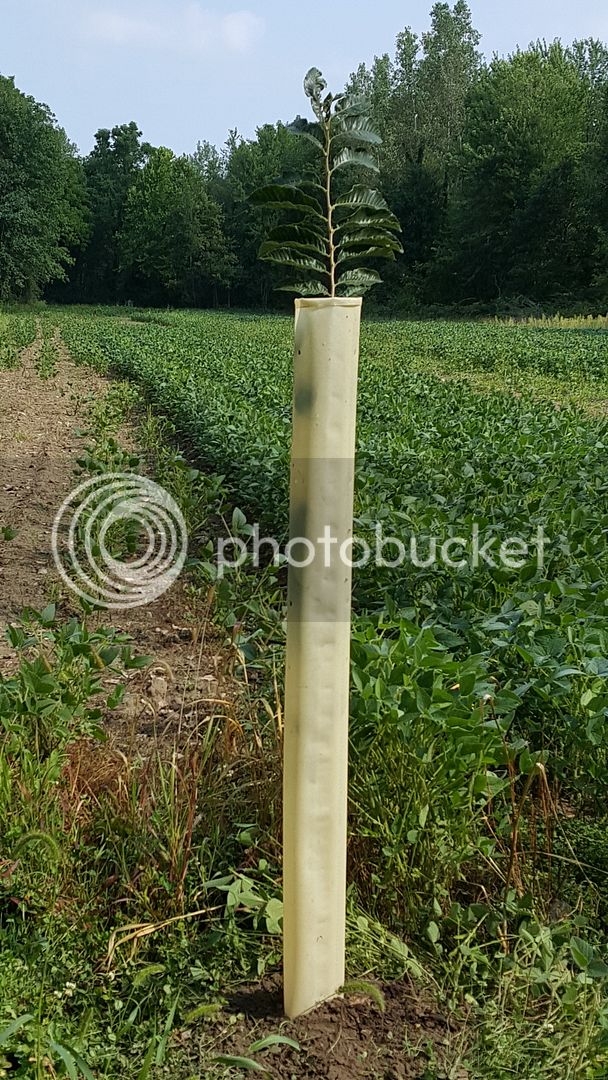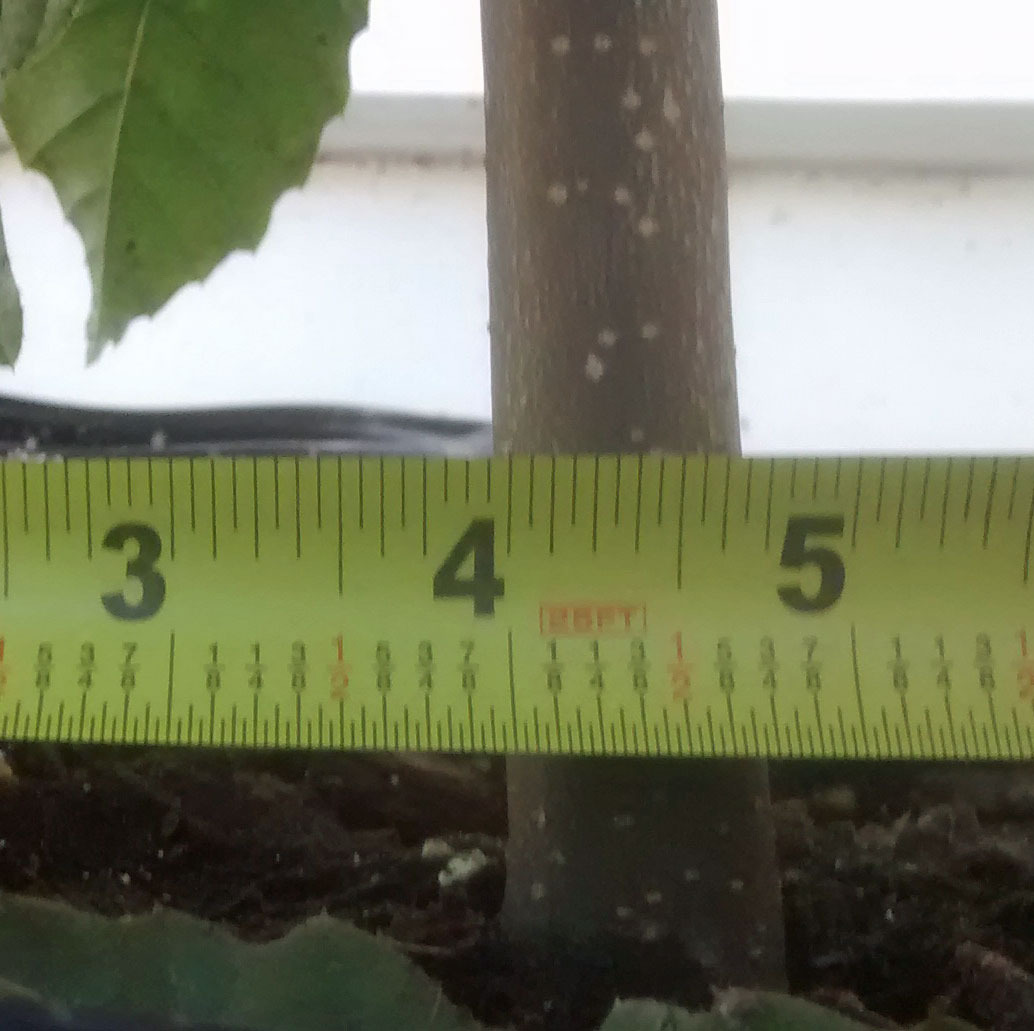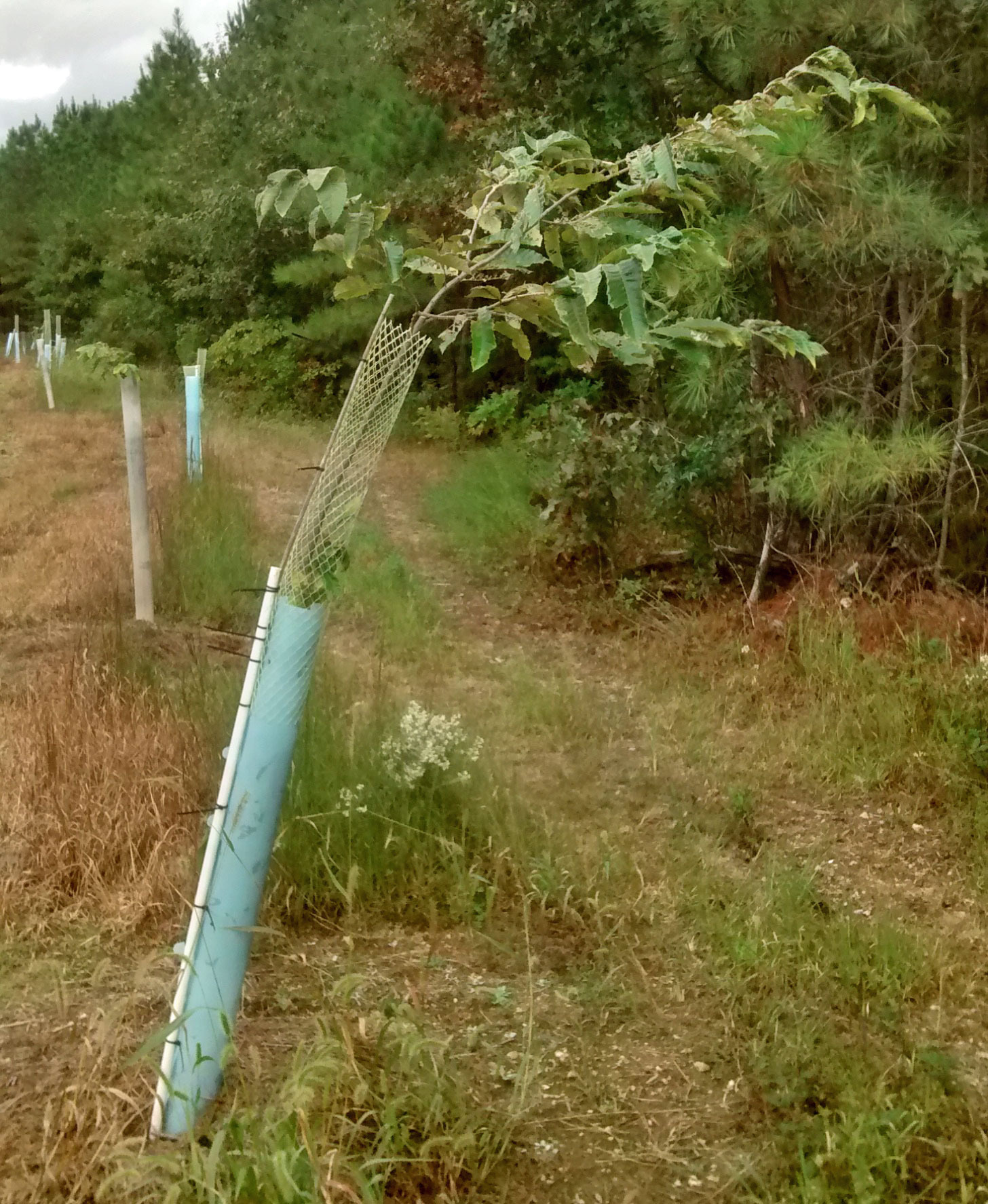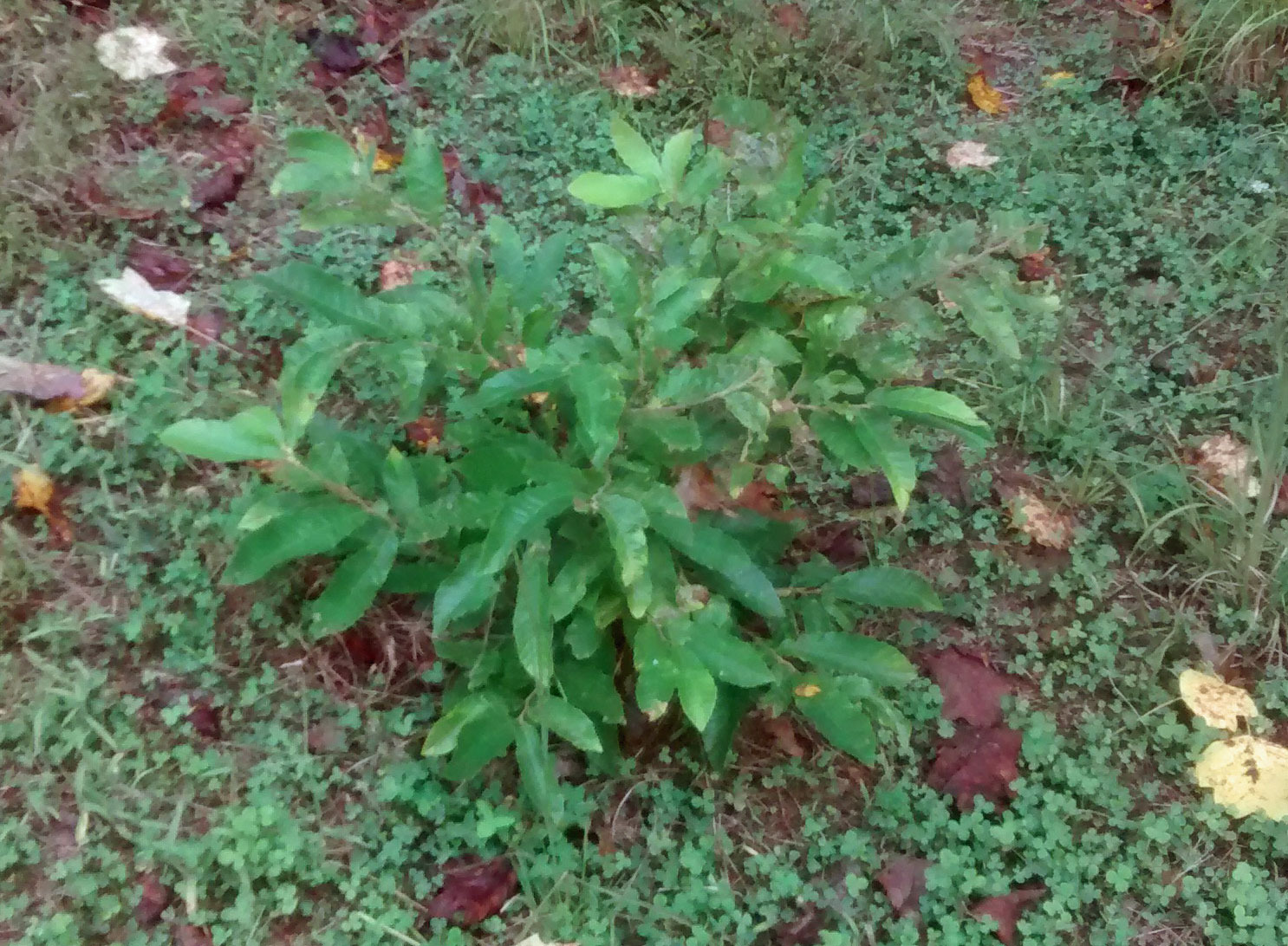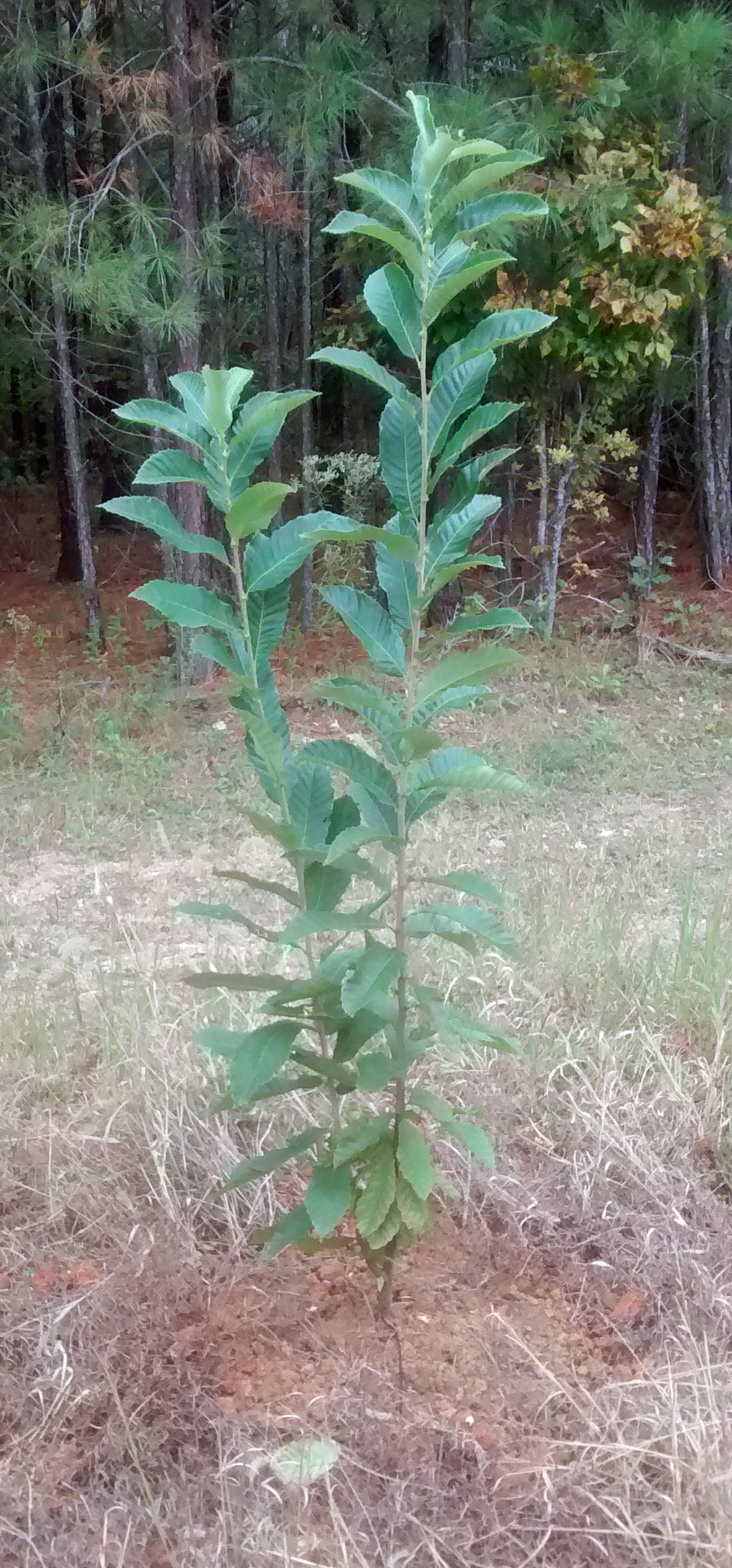jaximus;799978 said:
jack,
for those of us that are enamored with your success with chestnuts, can you just give us a timeline/heightline on these trees
you mention 4 ft, 6 ft, 8 ft and 10 ft.
how old are each height range and if you can compare say a "x" year old tree from planting from 18s is the same height as a "y" year old tree from a 1 gallon.
I wish I had kept better records. I described in the previous post what I did the first year. The second year, I planted everything in the spring and most were from 18s. I replaced trees that had died. Keep in mind that I learned a lot that first year. One of my big mistakes was skimping on the protection. I used 18" protex tubes that I vented myself and tried a few 3' and 4' tubes. In all cases I use 3' of rigid mesh above the tube. The biggest mistake was using bamboo to stake the protex tubes. Most of these either snapped in the wind or rotted in the ground by the next year. By the time I was able to replace them, many were browsed.
I have since switched to 5' Plantra tubes. These are more expensive but less work and protect much better. So, the variety in tree development is due to a variety of factors. When they were planted, how big there were when planted (18s verses 1 gals), whether they were set back by browsing or by Japanese beetles. I have come to believe (anecdotal evidence only) that the blue protex tubes attract Japanese beetles and the tan Plantra tubes don't.
Also, in the early years, I was still learning and had issues with water. I now have a rain water system I use.
Given so many variables, and inadequate record keeping (since I was focused on volume), I can't really give you a good timeline on my fielded trees.
I can say this. The experiment this year was only with 3 trees. All three started indoors but a little on the late side. Two were transplanted to 1 gal RB2 about mid-April when I took them outside. The other was transplanted into a 5" roottrapper bag. The two that were in 1 gal RB2s were transplanted to 3 gal in early summer. When I looked at the rootball the transplant occurred only slightly on the early side, but that is what Dr Whitcomb suggests to maximize growth.
Of those two trees one took the Chinese form with early branching so it grew low and bushy. The other seen in the picture is over 6' tall and only has one branch. Both trees are about the same caliper at 3/4" or slightly more.
The third tree in the 5" bag is about 18" tall with a small caliper.
The points I'm trying to make in this thread are these:
1) Keeping a tree through the summer in a 5" bag or 1 gal container seems to offer little benefit over planting that same tree in the spring. However, if you make timely transplants of the tree up to a 3 gal RB2 container, you can really maximize growth in 1 season.
2) After trying a high volume low cost approach, planting from 18s in the spring and minimizing protection trying overwhelm deer with trees, I have come to the conclusion that my resources are better spent planting fewer trees that are larger with bigger root systems. This is higher cost both in labor and dollars on a per tree basis. I still need volume in the long run, but from now on, I'll be planting fewer chestnuts each year (around 50 verses 150-200). I'll be keeping them at home over the summer upsizing eventually to RB3s and then planting them in the fall.
Thanks,
Jack

